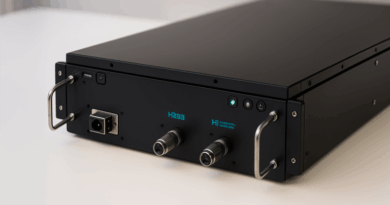‘ASIC Financing’ Is Driving Down Bitcoin Mining Profitability

- Bitcoin mining profitability is in the basement, seeing all-time lows in 2020.
- Conversely, Bitcoin’s hashrate has surged throughout 2020, propelled in part by mining farms financing new hardware to boost their operations.
- Bitcoin’s hashrate has taken a dip as China’s wet season comes to an end, but mining professionals predict this will only be temporary, and it has only improved profit margins so much.
Bitcoin mining profits have been rock bottom in 2020.
For much of the year, the cryptocurrency has been less profitable to mine than ever. And that’s because Bitcoin’s collective hashrate – or how much computing power is pulsing through the network – has surged to consecutive all-time highs this year.
Read more: How Bitcoin Mining Works
According to North American Bitcoin mining company Luxor’s hashprice index, miners are extracting $0.096 for every terahash they produce (before the recent price spike, it was lower still at roughly $0.08). This time three years ago, miners could expect to make roughly $1.40. Their revenue in October of 2019, though several magnitudes less than what they were raking in during 2017’s market mania, was still double today’s cash flows at $0.16.
Coming into 2020, miners were producing approximately 90 exahashes a second (or 83,000,000,000,000,000,000 cryptographic numbers a second in an effort to generate new blocks). Now, they are producing roughly 124 EH/s, after hitting an all time high of 157 EH/s in mid-October.
Bitcoin mining is a resource war of attrition, so naturally, revenue margins are dwindling in a year when Bitcoin’s hashrate is exploding. And ASIC financing could largely be to blame.
The practice, whereby big operations can take out loans to bulk-order newer generation hardware, floods the network with fresh hashrate. The surge in hashrate has meant more competition than ever for the digital gold rush – and with fewer bits to go around, small-time miners are having trouble keeping up.
Bitcoin’s hashrate and mining revenue are inversely proportional
Luxor Mining pool operator Ethan Vera told CoinDesk that the anemic miner revenue is a direct result of Bitcoin’s growing hashrate, its relatively stagnant price and lower-than-usual transaction fees.
According to Luxor’s index, the 7-day hashrate average is currently resting at 124 exahashes a second, and Vera said this “is largely due to Bitmain S19s and Whatsminer M30s being delivered to the market in large quantities.”
It’s not unusual, of course, for miner revenue to decline when hashrate is going vertical. But Bitcoin’s stellar increase in hashrate in 2020, a nearly 30% increase this year, is the result of accelerated investment in the industry. Much of this growth comes from ASIC financing, wherein miners take out loans to buy the best new-generation mining equipment.
Luxor Mining’s Hashprice Index: Source
The mining finance industry, populated by key players like Blockfills, Arctos, BlockFi, SBI, DCG and Galaxy Digital, continues to grow. Increased competition has led to lower rates, Vera said, with some miners being able to secure sub 10% interest loans. Just a year or so ago, the common rate was 20%.
“A number of North American companies have been in the news recently for large hardware purchases, particularly RIOT Blockchain and Bitfarms. Foundry has also popped up recently and offering financing options for ASIC miners,” Thomas Heller, the COO of mining media firm HASHR8, told CoinDesk.
Most recently, CoinDesk reported on Marathon Patent Group’s purchase of 10,000 Antminer s-19s, which could pump an estimated 1.1 exhashes into the mining company’s operation. This is Marathon’s second bulk purchase from Bitmain this year after it scooped up 10,500 ASICs for $23 million in a deal with Bitmain this August.
Stephen Barbour, whose company Upstream Data provides mining rigs to oil drillers which run on vented natural gas, sees this as detrimental to Bitcoin mining’s short-to-near-term health. In some cases, he told CoinDesk, the big players aren’t always optimized for profitability because they have financial cushions.
“These guys can rent out an old mine, operate at a loss and then recapitalize,” he told CoinDesk, referring to these firms’ abilities to take out new loans or woo new investors when they need to shore up finances.
A look at one such firm, RIOT Blockchain, makes Barbour’s point. The publicly traded company purchased thousands of ASICs this year in a herculean (if quixotic) effort to quadruple its hashrate by 2021. As of June 2020, RIOT had net operating losses of nearly $15 million, according to SEC filings. RIOT clocked a similar loss in the first half of 2019, and Marathon posted $3.2 million in losses for the first half of 2020.
Northern AG, another publicly traded mining operation, had a net income of -$8.7 million in 2019 and -$5.6 million in 2018. Even the profitable ones, like the likewise public industrial miner Hut 8, barely eked out a profit in 2019: after generating $83 million in revenue, Hut 8 pocketed just $2.1 million after debt obligations and other expenses.
Disregarding profit, these miners continue to expand in hopes of future spoils, but this very activity is sending Bitcoin’s hashrate skyward, Barbour argues.
“These guys can get these big loans and they are effectively operating at a loss, and it’s propping up the hashrate.”
Retail miners feeling the heat
As these big Bitcoin mining farms scale irrespective of profit, Bitcoin’s hashrate pumps, and smaller players are having a hard time keeping up with the suped-up competition.
“It’s becoming increasingly challenging for small miners to compete for both hosting and hardware purchases, because lower prices are available for those orders with larger volume,” Heller said.
Vera said, “There is still a large retail market in China that can access sub $0.04 cent power during the rainy season in the Sichuan province. But outside of China, retail mining has declined significantly.”
That rainy season, which provides gushes of cheap power to Chinese miners, is coming to an end, and with it, Bitcoin’s hashrate has taken a 12% hit to 124 exahashes. Heller said this dip, which happens annually, will “only be temporary” as the older machines migrate to areas like South America, Kazakhstan, Russia and Iran.
The miners buying these rigs aren’t concerned with profit, Vera says. “They have other reasons for it,” he said, “such as to avoid capital controls or avoid sanctions.”
For others who are trying to turn a profit, bitcoin’s recent price bump to $13.6K will help a bit, and further upward price action would widen these miners’ revenue margins.
Price may only be part of the solution, though; addressing the competitive discrepancy may also require new market tools to shift hashrate distribution. At least, that’s the idea behind Compass, a service by HASHR8 that matches retail miners with mining farms to host their equipment. Compass wants to make it easier for these miners to find a facility, thereby lowering the barrier of entry to the process and (hopefully) finding the most economical setups for individual miners.
A problem for the Bitcoin mining market (and time)
Something like Compass may help smaller miners break into the game. Or maybe the problem will resolve itself when the market does its thing.
“I think in the long term you’ll see more of these massive operations fail,” Barbour told CoinDesk.
A pumping hashrate is always “a terrible thing for miners,” Barbour said, and it may be a degree worse for the little guys, considering “they don’t have the advantage of economies of scale like the bigger guys,” Barbour continued.
But that doesn’t mean it’s easy on the big players, either. After all, more hardware means more operational overhead, as well as a mountain of debt to pay off for the financed ASICs.
To sum up the situation with an idiom, the bigger they are, the harder they fall. And Barbour thinks the mining giants’ time is coming.
“I think all of these financed operations are a part of what I call the ‘discovery phase’ for this industry. I think we’ll see more of them in the near term but they’ll struggle longterm, and I think their operations will fracture and splinter.”
He continued to say that, unlike smaller mining operators like himself who have their own “skin in the game,” these financed operations were launched on the back of someone else’s buck. While this does not guarantee that these businesses will be run in spite of profit, it does mean that the operators have less at stake than their small business counterparts.
Still, Vera pointed out that not all of these operations are the same and that these operation’s likelihood for success “depends on the interest rate and the operating cost of the borrow.” He added that interest rates around 10% are probably favorable for some of these miners, while any borrowing above that could be unsustainable.
“A race toward zero”
For those firms that aren’t profitable, though, you may be asking why they are operating at all. Barbour told CoinDesk that they’re essentially “speculating on [the price ripping upward]”; they’ve ordered all this new-gen hardware to frontrun the bull run and are gambling that this run will come sooner rather than later.
Yet again, though, it could all come down to a waiting game of attrition, Barbour says, and the price might not matter that much in the long run. Per Moore’s Law, which stipulates that computer processing improves exponentially, ASIC mining hardware will continue to improve towards maximum efficiency.
Eventually, Barbour argues, the new gen stuff won’t be much more efficient than the old gen, so miners who can mass order machines won’t have an advantage. As miners continue to search for the cheapest, near-free electricity, Barbour believes the mega-operations will eventually be priced out because the upside won’t be there to justify the use of capital.
“They’d be better off just buying bitcoin … Any time there’s a drive for cheap power, it drives down the profitability for everyone. It’s a race toward zero,” Barbour said.



